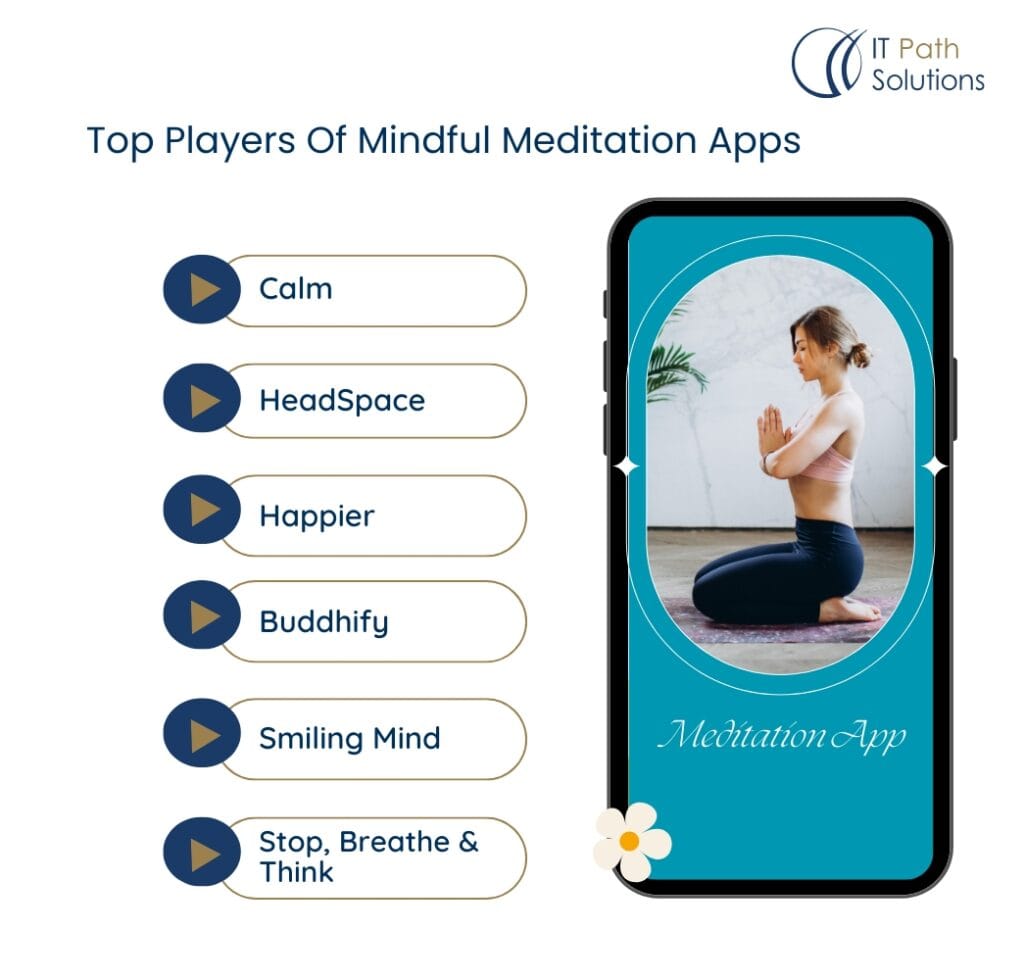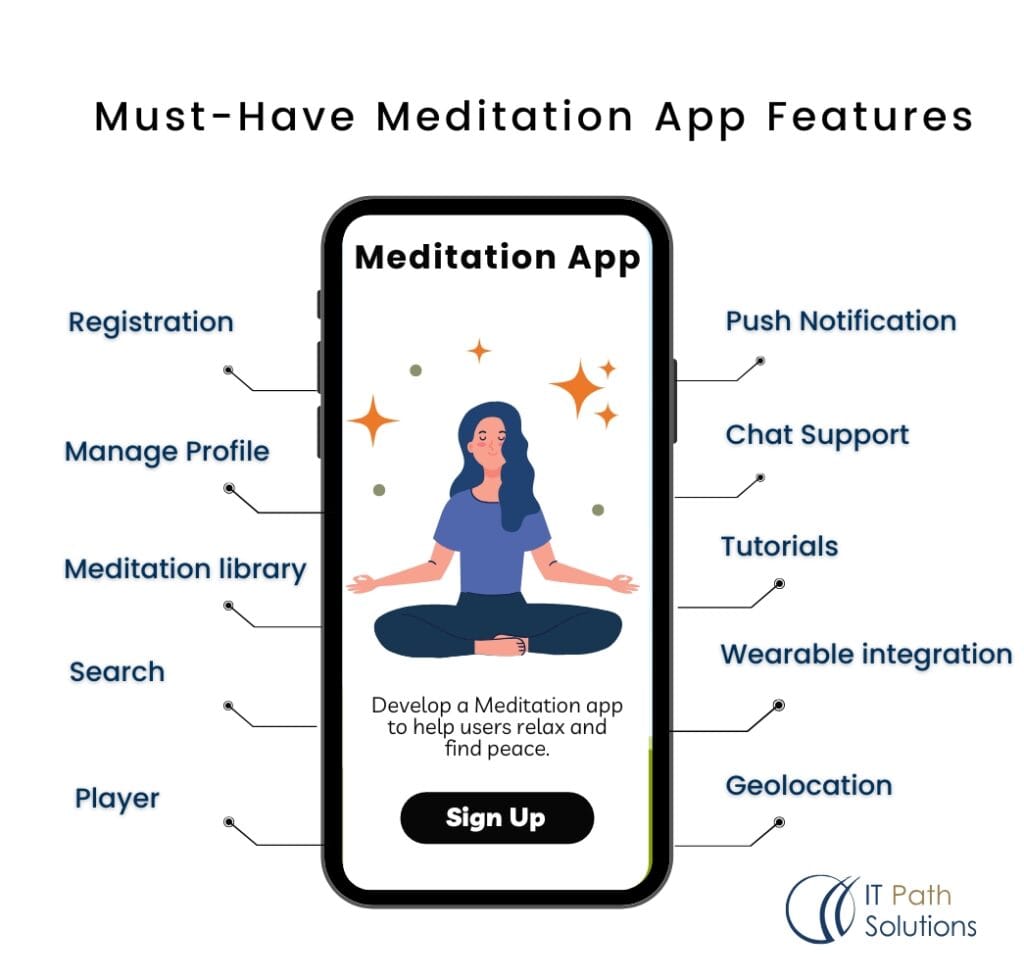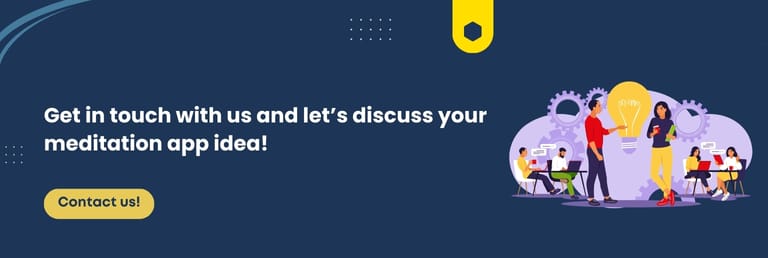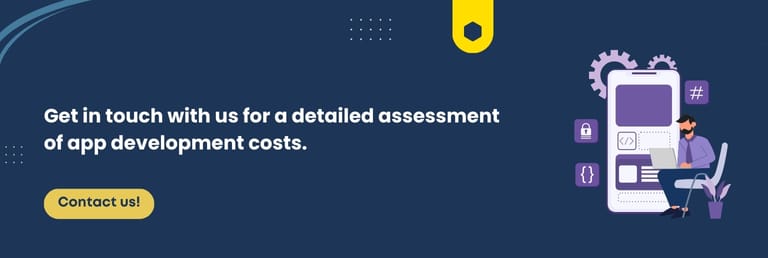How To Develop a Meditation App?
Keyur Patel
September 12, 2025
7 min
Earlier, switching to Airplane mode was the only way to disconnect yourself from the digital world, and focus on personal well-being. However, today, mindfulness has gone digital. We have meditation apps that allow us to live stress-free moments. With meditation apps like Headspace and Calm on the market, mobile users can sneak out some peaceful time for themselves that helps them stay focused, rested, and productive throughout the day.
There’s a growing shift toward self-care solutions, resulting in a significant rise in meditation app users. Here are a few statistics that illustrate the rising demand for meditation apps.
- Headspace is an application with more than $ 100 million in annual revenue.
- The meditation market in the US was estimated to be worth $ 1.21 billion.
- The global mental health apps market is expected to reach USD 17.5 billion by 2030.
- Search terms like “mindfulness apps” and “yoga for beginners apps” have increased by 65%.
The numbers clearly state that it’s a promising opportunity to enter the meditation app market by developing meditation apps like Calm and Headspace.
In this blog, we will discuss the types of meditation apps, the meditation app development process, the ideal tech stack for meditation apps, and the challenges you might encounter while developing an app.
What Are Meditation Apps?
People have been tied around smartphones for the longest time now. But with meditation apps, hanging on smartphones has taken a healthier turn. Meditation apps provide guided mindful sessions to the users. There are a variety of meditation app types that exist in the market. Here is the list for your better understanding.
- Sleep meditation app;
- Anxiety-calming app;
- Breathe meditation app;
- Stress-management app;
- Focus app;
- Yoga app;
- Guided-meditation app;
All of these applications are different from one another in one way or the other.
Types of Meditation App:
Guided-meditation app:
Guided meditation apps offer users a range of mindfulness sessions and self-care activities directly on their mobile devices. Users can select topics that align with their personal wellness goals, whether it’s managing stress, reducing anxiety, improving focus, or promoting regular mental well-being.
Sleep meditation app:
Sleep meditation apps are designed to enhance the sleeping patterns of people. People suffering from insomnia, or sleep issues can use the application to help themselves with curated sleep meditation programs. These apps also contain music that boosts sleep and helps them rest better for the day.
Breathe meditation app:
Breathe in, breathe out, let the whole world shut down! Breathe meditation apps help users practice healthy breathing activities. The specially designed breathing exercises regulate the user’s breathing and promote a healthy lifestyle.
Yoga app:
Yoga apps have curated yoga sessions for beginners, intermediates, and experts. Users can pick a level and start practicing yoga daily.
All of these apps can integrate various features and offerings to support individuals in maintaining a healthier and more balanced lifestyle.
Which Are The Top Players Of Mindful Meditation Apps?

Here is a list of popular meditation apps that help individuals manage their daily mindfulness routine.
- Calm;
- HeadSpace;
- Happier;
- Buddhify;
- Smiling Mind;
- Stop, Breathe & Think;
- Insight Timer
Meditation App Features:

The popularity of applications largely depends on the unique features they offer and how effectively they engage users. Providing an interactive and enjoyable user experience is key to long-term success. Below are some expert-recommended features that we believe are essential for any meditation app..
| Features | Functionality |
| Registration | Allow users to sign up using social media logins or registered Google email IDs |
| Onboarding | Design an intuitive UI for an easy onboarding of the users |
| Profile customization | Let users fill in their details, goals, and things that they want to personalize using the app |
| Meditation library | Curate engaging content that offers users different styles and lengths of meditation, guided sessions, and thematic sessions. |
| Search | The meditation help should facilitate easy searching of sessions, experts, music, etc |
| Player | Let users play music and meditation sessions with ease |
| Push notification | Let users receive specific alerts for pending tasks, any new features, or added guides to the app |
| Chat Support | App users should be able to connect with support to solve any of their queries with ease. |
| Tutorials | Users should be able to easily discover various tutorials added to the app |
| Personal statistics | Allow users to set their personal goals and achievements and track them as required. |
| Wearable integration | Integrate wearables for easy tracking of sleep patterns and habits of an individual. |
| Geolocation | Geolocation will allow users to find meditators nearby. |
How Does a Meditation App like Headspace Make Money?
You can either have a paid app or a free meditation application developed for your audience. For paid apps, the user pays an initial registration fee and then freely access the services.
However, with free apps, you can try any of the following monetization models.
- Subscription model: You can launch a subscription plan where a user pays a monthly or yearly fee to access various services.
- In-app ads: You can make money from a meditation app by showing a few in-app advertisements. Allow relatable brands to showcase their product advertisements on your platform and in return, you charge some fee from them.
- Partnership and sponsorship: Collaborate with different brands to grab their audience in exchange for money.
What Tech Stack to Choose for Meditation App Development?
To create a mindfulness app, the selection of an appropriate tech stack is very important. The right selection of tech stack ensures proper working and better outcomes from a meditation app.
Here is the technology stack that we recommend for meditation app development.
Framework:
React.js, Electron.js, React Native. For any queries regarding the selection of frameworks, feel free to contact us.
Utilities: Google Analytics, CloudFlare, Amazon CloudFront, Stripe, Twilio SendGrid.
For any further discussions on the app development process or tips to reduce the app development cost, reach out to our experts.
Challenges You Might Face While Developing a Meditation App Like Calm:
Developing a meditation app is an alluring option, however, it comes with several challenges that we would like to address. Let’s look at the various challenges that you might face while launching the app.
Content localization:
If you wish to develop an app that reaches a broader range of audience, you need to develop a multilingual app. However, it has its own set of challenges that need to be addressed to develop one.
Intuitive UI and Performance Speed:
Simple the design, the better the performance. It is quite a challenge to develop an intuitive application while still managing the speed of the application’s performance.
Authenticity of content:
The modern-age audience does not solely rely on online content available on the apps. They need a solid backup reason that supports the app content. This means it might become challenging for you to win the trust of the customers during the initial days.
What is the App Development Process for the Meditation App?
From brainstorming the app development idea to implementing it, we have a comprehensive app development process that we follow for an app idea. Our normal app delivery time is around 6-8 months, however, this may vary depending on various factors that affect the time and cost of app development.
Here is a brief about the app development process that we follow at our company. Learn more about our step-by-step app development process.
What Is The Cost Of Meditation App Development?
It is difficult for us to give you an exact answer regarding the cost of meditation app development. There are a lot of factors some of which are mentioned below that influence the final cost of meditation app development.
- App features;
- App complexity;
- App design;
- UI/UX;
- Tech stack
- Location of the app development company;
- Hourly rates of developers;
- Etc.
To give you an approximate figure, the meditation app development cost would fall somewhere between $20,000 to $40,000 depending on your requirements.
Let’s Develop Your Meditation App:
The demand for meditation apps is growing and the industry is also equally profitable. It is indeed the right time to develop a meditation app that reaches millions of people. IT Path Solutions is in a constant endeavor to help you develop an app that breaks the record. We hope this article has helped you to firm your decision on app development. Thank you!
Keyur Patel
Co-Founder
Keyur Patel is the director at IT Path Solutions, where he helps businesses develop scalable applications. With his extensive experience and visionary approach, he leads the team to create futuristic solutions. Keyur Patel has exceptional leadership skills and technical expertise in Node.js, .Net, React.js, AI/ML, and PHP frameworks. His dedication to driving digital transformation makes him an invaluable asset to the company.
Get in Touch
Search
Blog Categories

